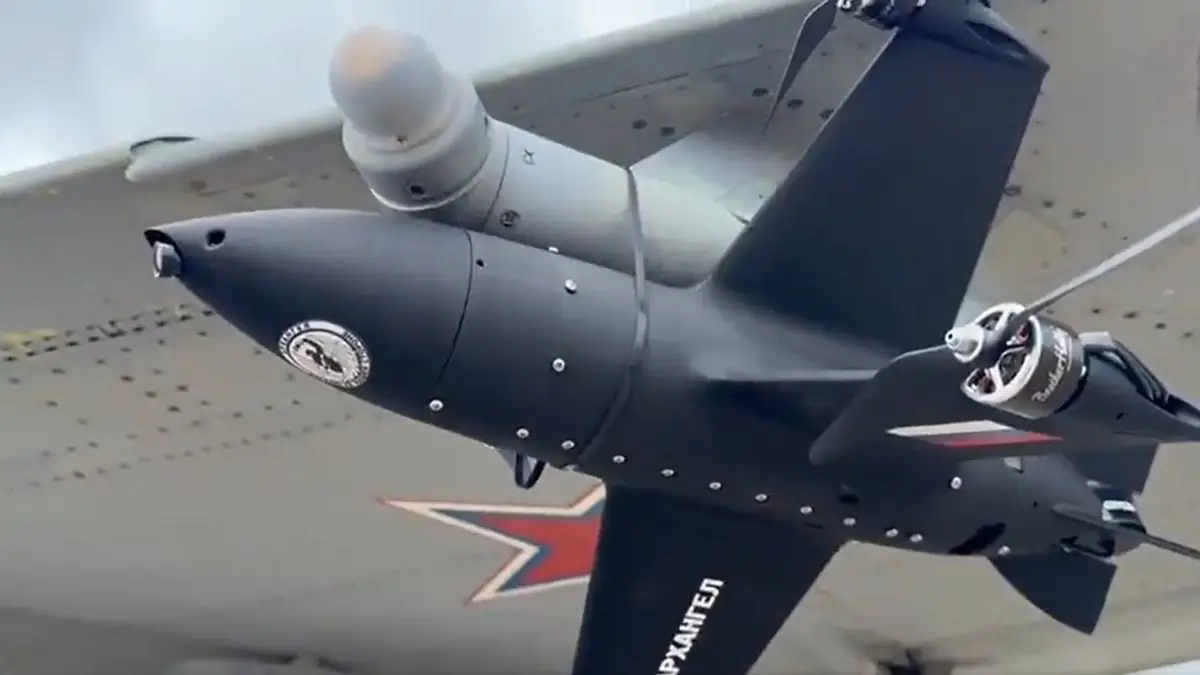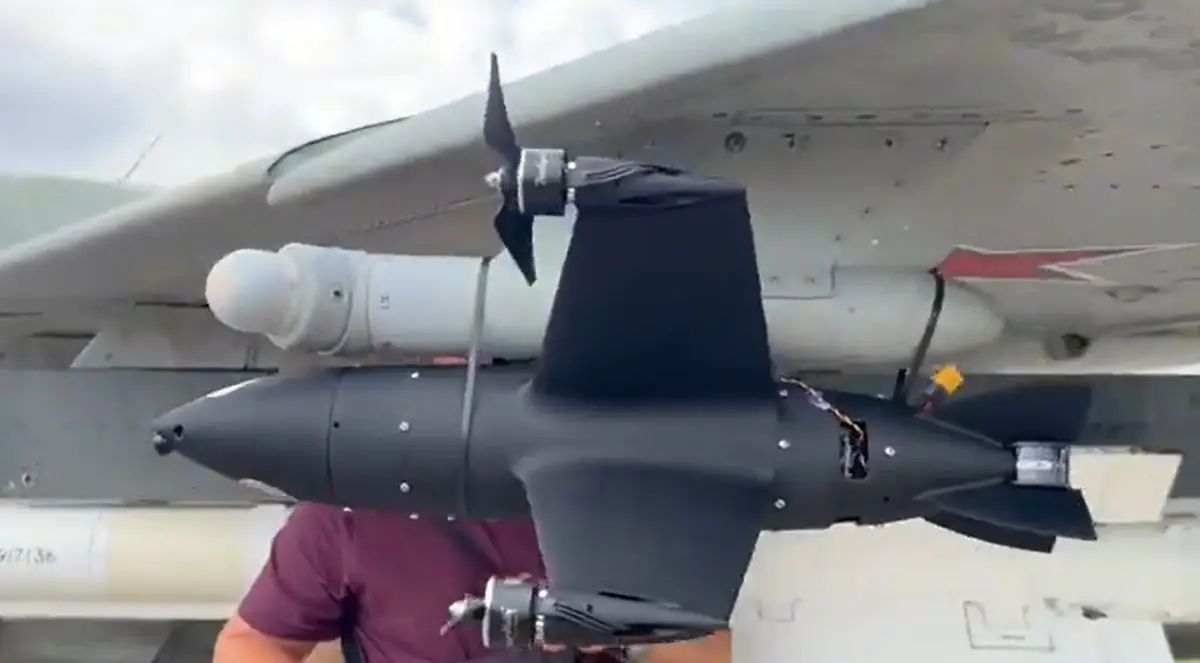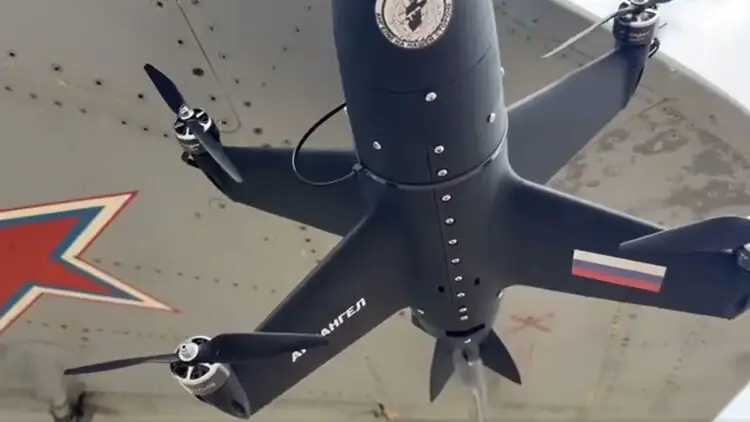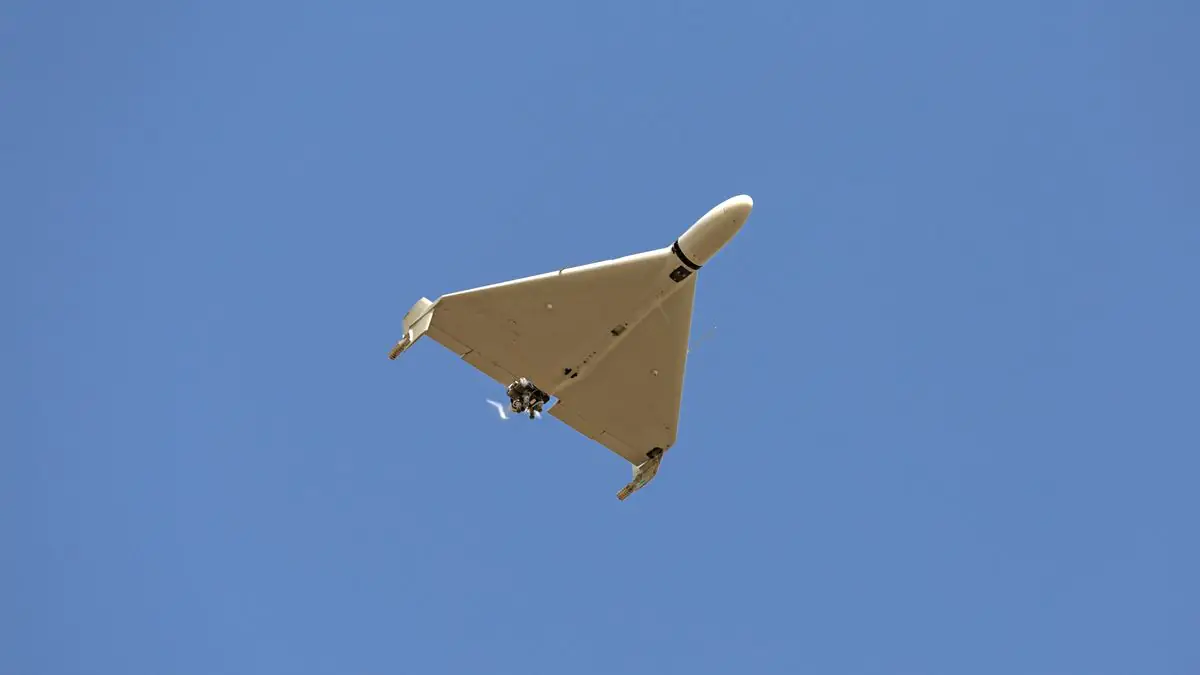Strange footage has surfaced on Russian social media showing attempts to attach a so-called interceptor drone to a MiG-29 fighter jet for countering other drones. The idea is presented as an experiment in integrating a CUAS (counter-uncrewed aerial system), but the execution comes across as frankly absurd, and its practical value is highly questionable.
The video was recorded by the Russian volunteer group “Archangel,” which produces FPV drones. It shows their “interceptor” attached under the wing of a MiG-29SMT in an extremely makeshift way – the drone is simply tied to a sensor containing the aircraft’s radar warning system using plastic zip ties.

It’s clear that in its current form, launching the drone in flight is impossible. Moreover, even with a different mounting method, such a project would require extensive and complex testing. The chances that this drone could withstand the stresses of high-speed flight are virtually zero – the propellers are too vulnerable, and the overall design isn’t suited for such conditions. Additionally, the drone could potentially interfere with the aircraft’s protective systems to which it is attached (which, ironically, are supposed to enhance the plane’s defense).
The video ends with shots of the “Archangel” pilot in the cockpit of a MiG-29, followed by the takeoff of a Su-27 family aircraft – apparently without drones strapped on with cable ties or duct tape. The location and date of filming are not disclosed, but it is known that in 2014, the Russian Ministry of Defense ordered 14 MiG-29SMTs, assembled from unfinished airframes at the Mikoyan plant in Moscow. These aircraft are stationed at a training base in Privolzhsky near Astrakhan and, as far as is known, have not taken part in combat operations against Ukraine.
The exact connection between the “Archangel” project and the Russian Armed Forces remains unclear. However, the group is one of several formed after the start of the full-scale invasion of Ukraine with the goal of rapidly producing FPV drones. By late 2023, drone expert Samuel Bendett speculated that the “Archangel” project receives funding from the Ministry of Defense, as it leverages capabilities provided by private initiatives of this kind.
Previously, the group claimed their interceptor drone could reach speeds up to 350 km/h and cover distances of 50 km, though these claims remain unverified. For effective aerial drone countermeasures, however, devices need to fly faster and higher than typical FPV drones, which are primarily designed for striking ground targets.
In their latest statement, “Archangel” claims to be working on integrating interceptor drones directly onto fighter jets. “We searched extensively for the perfect spot for our guided interceptors and decided to place them on MiGs,” the statement reads. They also note that “the aircraft itself moves slightly faster than our drone’s cruising speed,” adding – jokingly or not – that “it can deliver the interceptor directly to Kyiv or Lviv.” This, of course, is an entirely unrealistic scenario given Ukraine’s air defense capabilities.

Setting aside the fact that the drone would be fixed to the aircraft, it’s unclear how it could be operated if it were even deployable. “The communication issue was solved in a radical way,” project representatives claim. “To avoid technical complications, we simply trained our team to fly the fighter jet.”
This claim is highly questionable, as it’s hard to imagine a pilot of a single-seat combat aircraft simultaneously controlling a drone and engaging an aerial target in real time. Most FPV drones designed for attacking moving targets rely on manual control or real-time weapon guidance, which requires a constant communication link between the drone and its controller. FPV drones without such control are typically intended for striking fixed targets.
Despite the comedic nature of this “experiment,” the concept of intercepting drones with other drones is actively discussed in Russian military circles. Engineers in Russia are indeed trying to develop air-launched FPV drones, as well as loitering munitions and other effective systems. However, this particular case looks more like a failed PR stunt than a real military project.
Read also:
- India Denies Losing Rafale Fighter Jet After Pakistani Airstrike
- Chinese Engineers Develop Drones Capable of Evading Missiles
Source: twz









